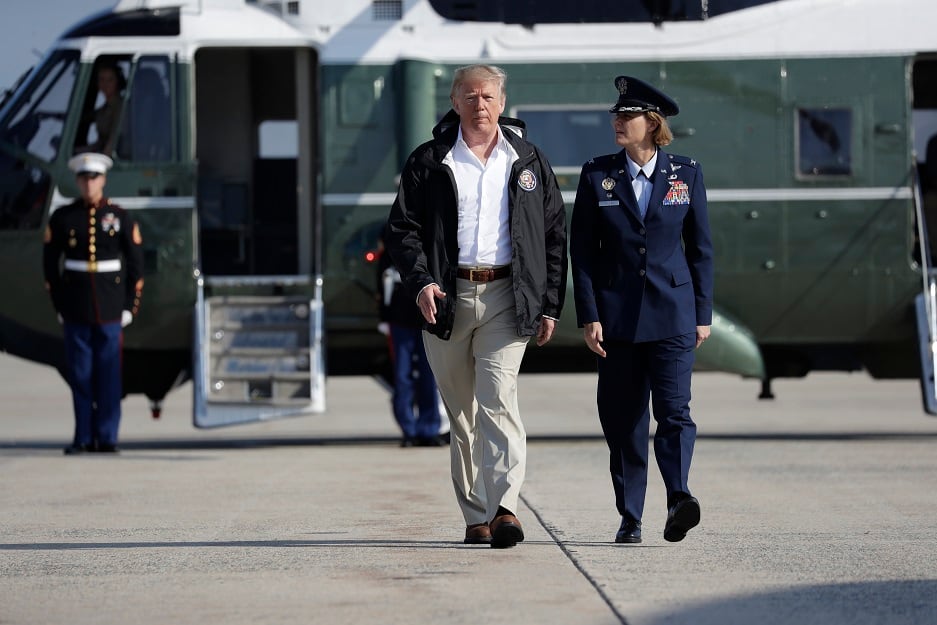WASHINGTON — Congress sent a message this year that it wants the Navy to build amphibious ships, and it’s going to put up the money to do it.
Overall the Navy’s shipbuilding account got a $2.2 billion boost over the $21.9 billion it asked for, but amphibs fared especially well in the deal.
The minibus spending bill that advanced out of the Senate and is headed to the House for its final vote funded $350 million for accelerated acquisition of the LPD-17 Flight II, a somewhat streamlined version of the San Antonio-class amphibious transport dock. That move comes on the heels of the Navy awarding Huntington Ingalls Industries a $165.5 million contract for purchasing long-lead time materials in August.
The ship, which is destined to cost $1.64 billion for the first ship and $1.4 billion for each subsequent ship, will replace the old dock-landing ships designed to launch both helicopters and amphibious vehicles onto the beach.
But the spending spree on amphibs didn’t stop with LPD-17 Flight II. Congress added three ship-to-shore connector craft for a total of eight in 2019, a $182.5 million plus-up over what the Navy requested. Congress also added $350 million for the advance procurement of Landing Helicopter Assault Ship 9, and added an expeditionary fast-transport ship (a fast ferry) to the budget for a total of $225 million.
The congressional largess toward amphibious shipbuilding is driven both by Congress’ desire to push the Navy to a 355-ship fleet as fast as possible, and by the evolving role played by amphibious ships in the Navy’s strategic thinking, said Bryan Clark, a retired submarine officer and analyst with the Center for Strategic and Budgetary Assessments.
RELATED

Clark, who worked on one of the Navy’s recent studies to choose a composition of the future fleet, said the Navy is increasingly using the amphibs and their aircraft in combat roles and keeping the carriers in more blue water environments.
“They are using the amphibs more as front-line capital ships, with the carriers being more of a strategic force that you keep maybe not as close to the enemy shoreline,” he said.
Anti-access, area denial
This move is being driven by China and Russia, which have made the capability of long-range anti-ship strike from shore batteries a priority in order to keep the U.S. Navy’s carriers at bay.
But to combat this dynamic, the Navy has increasingly looked to the Marine Corps and its amphibious force as a way to throw off the calculations of adversaries, especially in the Asia-Pacific region, said Dakota Wood, a retired Marine lieutenant colonel and now analyst with The Heritage Foundation.
The thinking goes that the Marine Corps can slip into the range of Chinese missiles, land a force on a feature or island, and start fighting back with missiles and sensors of their own. This will force the Chinese to expend resources to address the Marine threat, creating opportunities for the Navy to use its hefty strike capabilities.
“A Marine landing force on an island or feature has to present a problem to the enemy that is credible — anti-ship cruise missiles, short-range air defense, a sensor node contributing to the air or surface picture,” Wood said. “It has to be able to thin out the enemy’s fire power, sensor grid and attention span to give the Navy the chance to get inside the envelope, close and have an impact.”
Jobs
Congress is also worried about attracting and keeping shipyards in business and skilled workers in the shipyards to support a growing fleet. Pumping money into shipbuilding is the best way lawmakers know to do that.
“The plus-up is really across the board in shipbuilding,” said Clark, the CSBA analyst. “You look at the three littoral combat ships Congress is buying, two of which the Navy didn’t ask for. They are buying as many attack subs as the industrial base can deliver, and they are pushing toward allowing the Navy to procure two carriers at once to get the economic order quantity there.”
But in the case of amphibs, Congress is doing something new by spending on advance procurement. Generally the Navy has purchased amphibious ships one at a time, without multiyear contracts or a lot of advanced procurement money, Clark said.
Even for a 13-ship class like the LPD-17 Flight I, the ships were purchased as the money became available.
Congress adding money to advance procurement is an attempt to save funds by creating a more regular rhythm for the way the service buys its destroyers, littoral combat ships and attack submarines, Clark said.
David B. Larter was the naval warfare reporter for Defense News.








